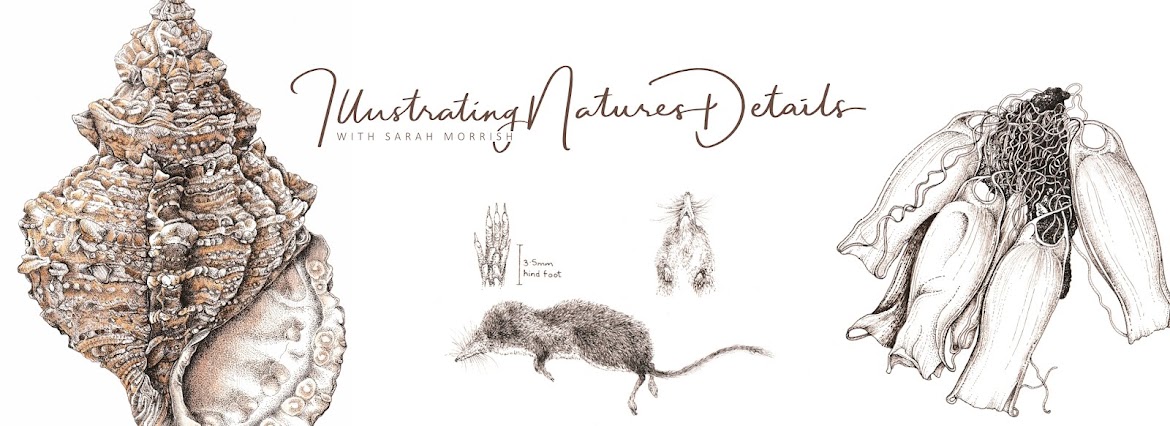For me purples can be a bit of a problem, I can never seem to get that really rich purple colour that I am trying to achieve, particularly the rich velvety purples that you see in pansies. Also when requiring more of a rich blue-violet mix too.
You may wonder why I am concerned about this in the middle of winter ? I ran out of time in the summer with one of my paintings - of Round-headed rampion. This is a plant found on chalk grassland and can be seen on Old Winchester Hill in Hampshire, as well as a few other sites in the South Downs National Park. So I need to get this painting finished using field sketches and photographs.
But what purple to use ? When I mix my own initially the mix looks perfect, but then it dries a little dull. Sandrine Maugy has also mentioned this in her book 'Colours of Nature' and goes onto say that this is a common problem with purples.
When I first started painting with watercolours, way back in the depths of time, I would always turn to Dioxazine violet based purples (PV23). Over the years there has been much discussion about the lightfastness reliability of this pigment, so I have steered clear of it for a long time. If you would like to read more about this issue, the
Handprint website goes into more details.
One suggestion is to use either Indanthrene blue (PB60) or Ultramarine blue (PB29) mixed with Quinacridone violet (PV19). (Upon further research I have discovered that Daniel Smith's Imperial purple contains these pigments PV19 & PV29 - so maybe that is worth a try ?)
Those of you that have followed by blog for a while, know that I am fascinated with colour and its properties. I know I work with a limited palette of 6 colours for teaching, but what I call my 'studio palette' has far more colours in it, that of course I am always willing to add to ! The 6 colours form my 'foundation palette' and the others are often used alongside.
So it was with delight that I thought I may have found a solution to the 'purple problem'.
Daniel Smith's Primatek range of paints have some gorgeous colours, some of which granulate, which can be an advantage when painting some subjects. These paints originate from naturally occurring pigments. One of these is Amethyst genuine.
So yesterday I excitedly started doing a few colour tests and these are the results.
Left: Amethyst genuine mixed with Winsor blue red shade (W/N), Indanthrene blue (W/N) and French Ultramarine (W/N)
Right: Amethyst genuine mixed with Anthaquinoid red (D/S), Permanent rose (W/N), Old Holland magenta (O/H)
The mixes retained their strength even once dried and produced a nice range of blue-based violets and red-based violets. This colour is meant to granulate, but I found in stronger mixes of colour the granulation wasn't that obvious in the final results, but was more visible in lighter washes.
I thought a solution had been found, but once I looked closer I noticed that there was a slight sparkle to the dried areas of paint. This is common with several of the Primatek colours because of the natural pigment qualities. But do I really want a sparkling Round-headed rampion ???
The naturally occurring sparkle to some lovely purples !
One thing to bear in mind, is that I am likely to produce cards and prints from the finished painting, so the sparkle will be a hindrance rather than a help in the reproduction process.
I have decided to keep on investigating and may well try Daniel Smith's Imperial purple next.
It would be great to hear of any of your favourite purple mixes, and I will let you know how I get on with my next purple challenge.
Happy painting !




















